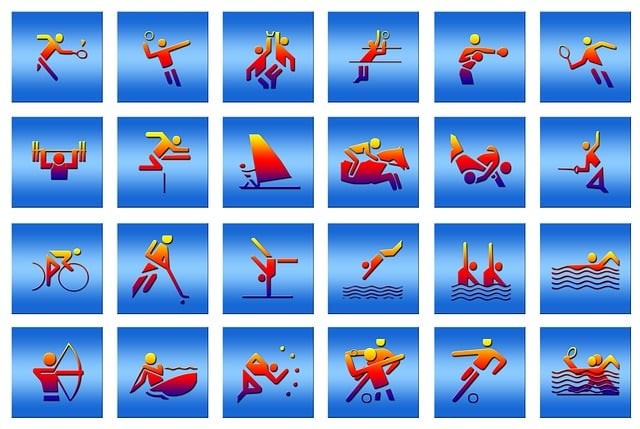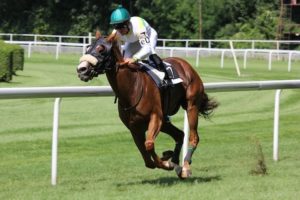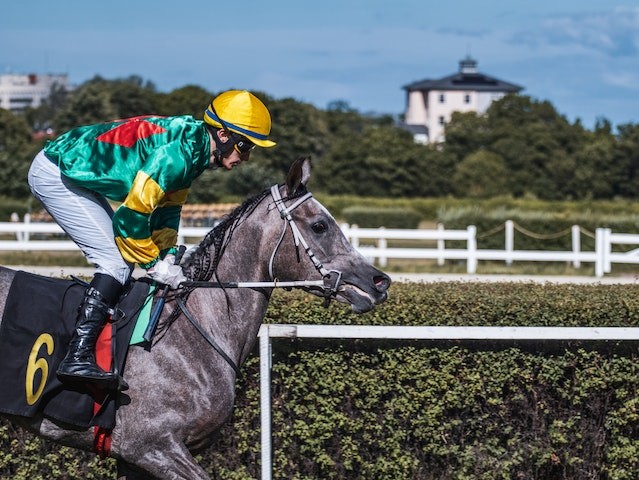The Most Popular Sports for Handicap Betting
 For most beginners or non-betting people, betting is simply a prediction of the outcome of a particular event. People think you can only bet on the win or loss of a specific team. However, the world of betting is much richer and more interesting. There are different types and betting markets. Let’s learn more about handicap betting and strategies for applying this market to various sports.
For most beginners or non-betting people, betting is simply a prediction of the outcome of a particular event. People think you can only bet on the win or loss of a specific team. However, the world of betting is much richer and more interesting. There are different types and betting markets. Let’s learn more about handicap betting and strategies for applying this market to various sports.
What is handicap
A handicap is an event that indicates the superiority of one team over another, expressed in a specific number of points. This market looks like this in a line: 2:0 handicap, 0:1 handicap, etc. The bettor’s task is to choose the match’s outcome, considering the proposed handicap.
For example, when betting on a 1:0 handicap, the player bets on the guests’ win. It means that initially, 1 goal for the home team is added to the starting score of 0:0 — supposedly, the game starts with a score of 1:0. Therefore, the guests will not have enough victory in 1 goal — it is necessary to win the match with a more considerable difference for the bet to win.
A win of 2 goals will be enough — if the actual score of the match is, for example, 1:3, then the bet will be calculated as a victory: after all, according to the result, the score, taking into account the handicap, is 2:3, and the bet was made on guests win.
Types of Handicap
Now that you understand this market’s general essence, let’s look at its types.
Asian
It is a fractional score gap between teams — for example, -3.25, +2.75. There are also double Asian handicaps. Its difference is that a partial refund of the bet is possible here. The amount of the bet on such an event is divided in half between adjacent simple odds: that is, if you bet on -1.75, then the first half of the bet goes to -1.5, and the second — to -2. Almost all bookmakers offer this betting option.
European
It is a betting option in which a specific exact score is added to a bet on an outcome. For example, you bet on a draw with a handicap (0:2). The bet can play if the hosts win with a score of 2:0.
Best Sports for Handicap
As we have said, many sports rely on this type of betting. It is available for most sports that award points. Basketball, football, handball, volleyball, golf, and even water polo offer this type of bet. It can be used in boxing and even in sprinting. It is a great way to let the players feel the odds are in their favor.
Football
In football, a characteristic phenomenon is the relatively low effectiveness of the match, which somewhat complicates the task for the bettor when betting on handicap markets. It is necessary to have good skills as a successful forecaster to successfully bet in this direction without losses in the long term. Here you should guess the duel’s winner and almost precisely determine how many goals each team can score.
In football, handicap values are expressed as the team’s goals scored: with a handicap, for example, (-1.5), the club must beat the opponent by at least two goals. The same is true for the reverse side: the advantage (+1.5) gives the team the right to concede by a maximum of one goal for the bet to work.
Hockey
The sport has its own points system and scoring model, which makes the primary performance indicators very important for betting in the handicap market. The highest scores have a touchdown with an additional point for an accurate shot on goal (seven points) and a goal scored from the field (three points). Such actions of athletes can quickly cover the value of the handicap, and with the necessary ability to analyze correctly, a bettor can significantly increase his profit in this market.
Basketball
In basketball, the handicap markets are a bit like hockey games. Here, too, most players prefer this type of bet and ignore the “money line,” where you need to guess the winner of the pair. In this discipline, there are some of the most productive indicators in the world of sports, and the number of points for both teams often exceeds 200 points, which attracts players quite strongly to betting with a handicap.
Tennis
In tennis, unlike the other sports we have described above, there are two options for betting with a handicap. And for the “money line” and for “totals” and “handicaps” here, you can bet on individual sets and even games. This game handicap is determined by calculating the total difference at the end of the game.
Conclusion
Understanding how the handicap betting market works is simple. However, before you decide to make money in this particular direction, you should carefully prepare and follow all the available data on the current form of athletes and their past performances. To profit in the long term, bettors need to have high forecasting skills, the ability to analyze statistics, and the ability to distinguish between different betting options to choose the most suitable one for themselves.
 The state of the ground, or going, on a racecourse is often a determining factor in where, when and how well racehorses run. Soft going is deep, moist and slightly muddy, thereby presenting a challenge that some horses relish, but others absolutely detest. However, there are several ways you can tell, or least make an educated guess, that a horse acts on soft going. In order of efficacy, they are its previous performances on the racecourse, its pedigree, its confirmation and gait and, last, but by no means least, the size of its feet!
The state of the ground, or going, on a racecourse is often a determining factor in where, when and how well racehorses run. Soft going is deep, moist and slightly muddy, thereby presenting a challenge that some horses relish, but others absolutely detest. However, there are several ways you can tell, or least make an educated guess, that a horse acts on soft going. In order of efficacy, they are its previous performances on the racecourse, its pedigree, its confirmation and gait and, last, but by no means least, the size of its feet! Engaging in a game at a
Engaging in a game at a